Again we left the hotel quite early, and made a number of stops during the day. Of these, 5 stops provided Mammillarias, although there were plenty of other plants, Escobarias, Coryphanthas, Thelocacti, Cylindropuntias etc. at all of them.
Our first Mammillaria stop was about 6km before Mapimi on Mex-30 heading west, and here we found several Mammillarias:
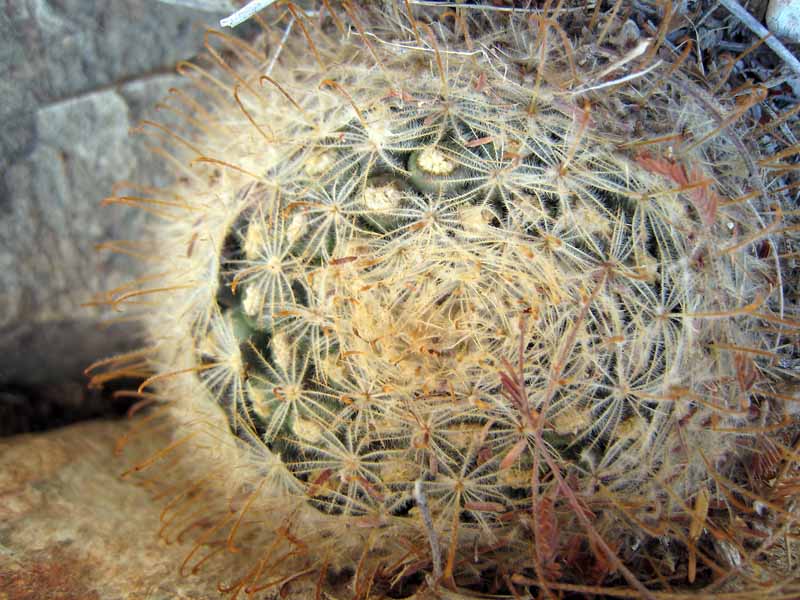
Mammillaria pennispinosa
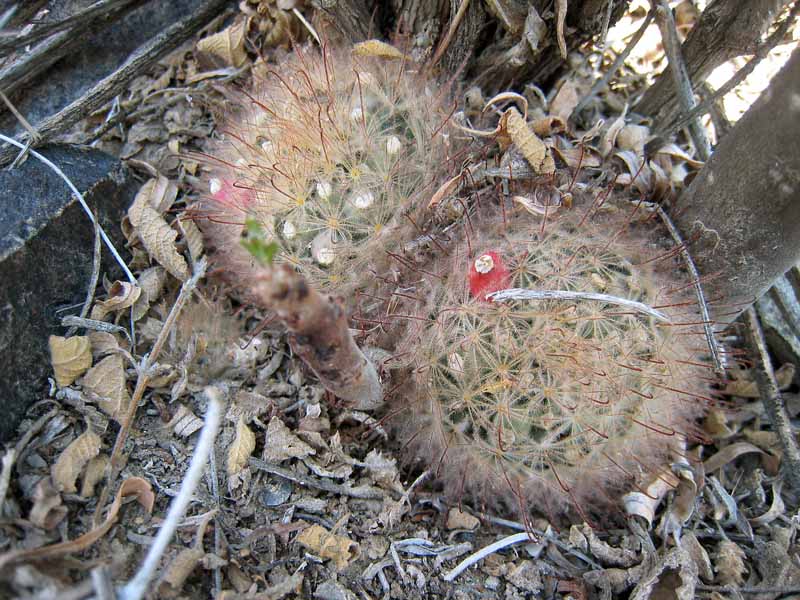
Mammillaria pennispinosa

Mammillaria pottsii
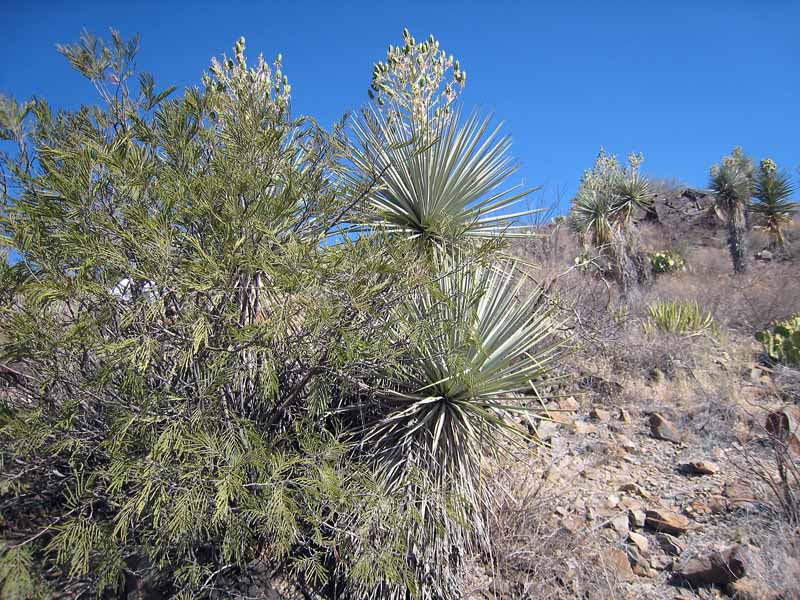
A view of the site
Somewhat further along on the MEX-30, maybe 4 km before the turn to San Pedro del Gallo, we stopped to see some glorious Yuccas, and then explored the north side of the road. It was a lovely area, full of Coryphanthas, Echinocerei, and:
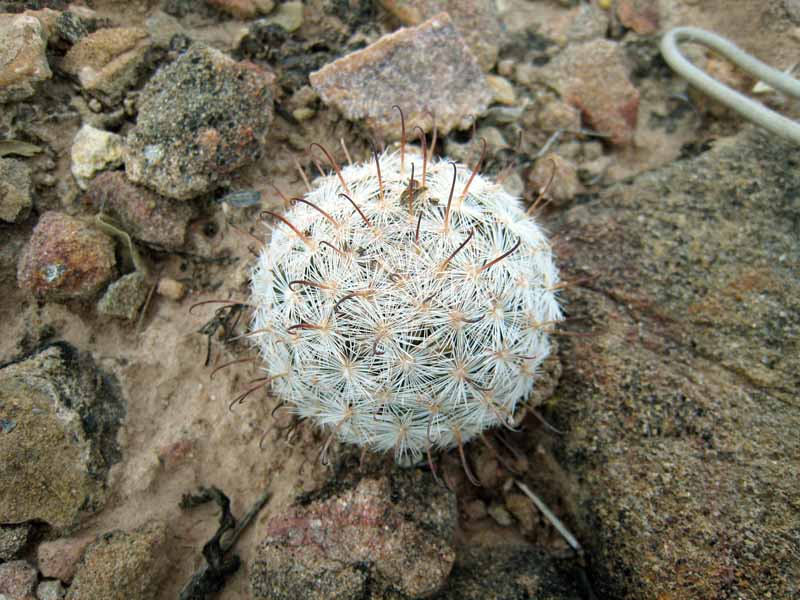
Mammillaria stella-de-tacubaya
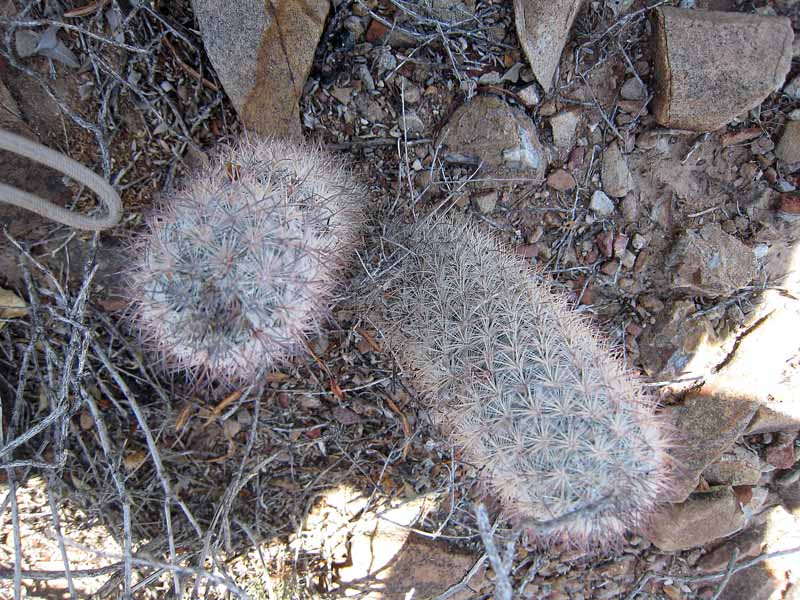
And lots more Mammillaria pottsii
Now we drove on until we met the Mex-45 again, and turned off this road just before the bridge over the Rio Nazas near Absolo (or Barranco) which was signed as San Rafael. We were heading towards Minas Navidad, but stopped for lunch some distance along this dirt road. Here there were some lovely Thelocactus heterochromus plants in flower, and one species of Mammillaria:
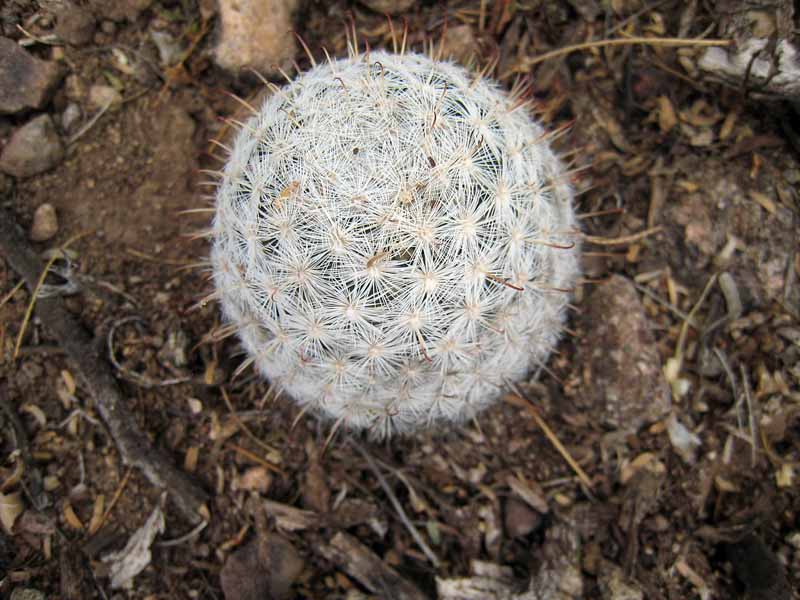
Another Mammillaria stella-de-tacubaya
Eventually we arrived at the location at which we hoped to find a certain Mammillaria. After a long time searching, not really knowing where at first to look, we did find a number of the plants, more on lower level rocks, a surprise as we had headed higher to start with.
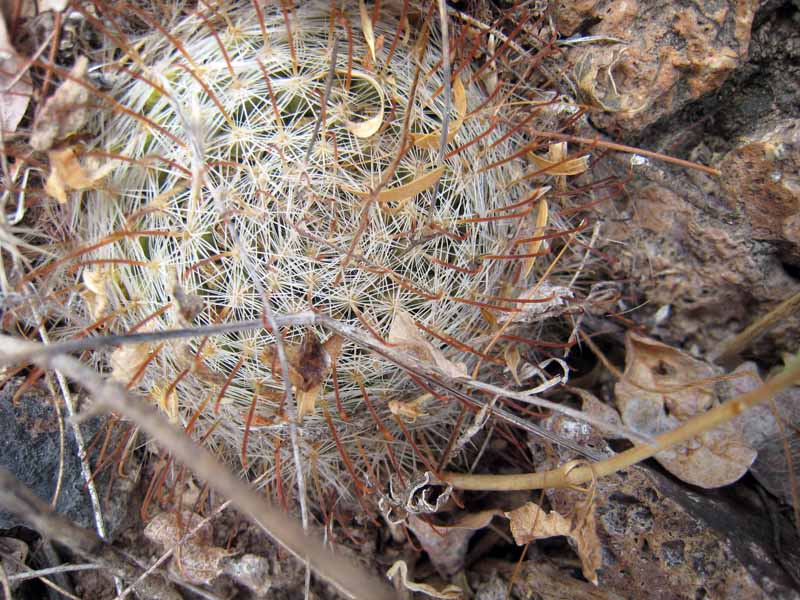
Mammillaria nazacensis (or pennispinosa ssp. nazacensis)

Mammillaria nazacensis

A view over the Rio Nazas valley from up on the hillside
Reluctantly we left this very beautiful spot, and returned to the Mex-45 to head back up north towards our overnight stop at Hidalgo del Parral. We made another stop just before the town of Las Nieves, and found an interesting Mammillaria.

I think it is a form of M. heyderi.

But the lower spines - are they centrals? or radials?
Again, I would like confirmation of my identification of this plant. It seems to have one very short central, and 15-18 radial spines, the upper ones white and short, the three lower much strongerl, much longer and of a darker colour. My take is that it is M. heyderi ssp. heyderi (or applanata).
